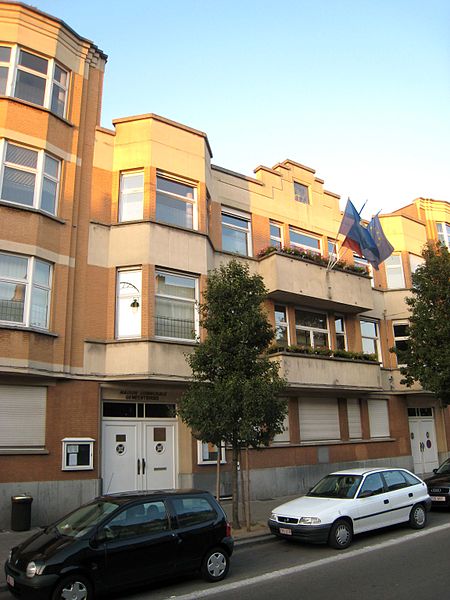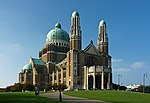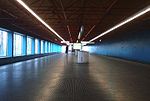Ganshoren

Ganshoren (French: [ɡansɔʁən, -ʁɛn], Dutch: [ˈɣɑnsˌɦoːrə(n)] (listen)) is one of the 19 municipalities of the Brussels-Capital Region, Belgium. Located in the north-western part of the region, it is bordered by Jette, Koekelberg, and Sint-Agatha-Berchem, as well as the Flemish municipality of Asse. In common with all of Brussels' municipalities, it is legally bilingual (French–Dutch). On 1 January 2006, the municipality had a total population of 20,970. The total area is 2.46 km2 (0.95 sq mi) which gives a population density of 8,541/km2 (22,120/sq mi). In 2018, Pierre Kompany was elected mayor of Ganshoren. He is the first black mayor in Belgium, and the father of footballer Vincent Kompany.
Excerpt from the Wikipedia article Ganshoren (License: CC BY-SA 3.0, Authors, Images).Ganshoren
Parvis de la Basilique - Basiliekvoorplein,
Geographical coordinates (GPS) Address Nearby Places Show on map
Geographical coordinates (GPS)
| Latitude | Longitude |
|---|---|
| N 50.866666666667 ° | E 4.3166666666667 ° |
Address
Basilique du Sacré-Coeur - Basiliek van het Heilig Hart (Basilique de Koekelberg - Basiliek van Koekelberg)
Parvis de la Basilique - Basiliekvoorplein 1
1083
Belgium
Open on Google Maps









